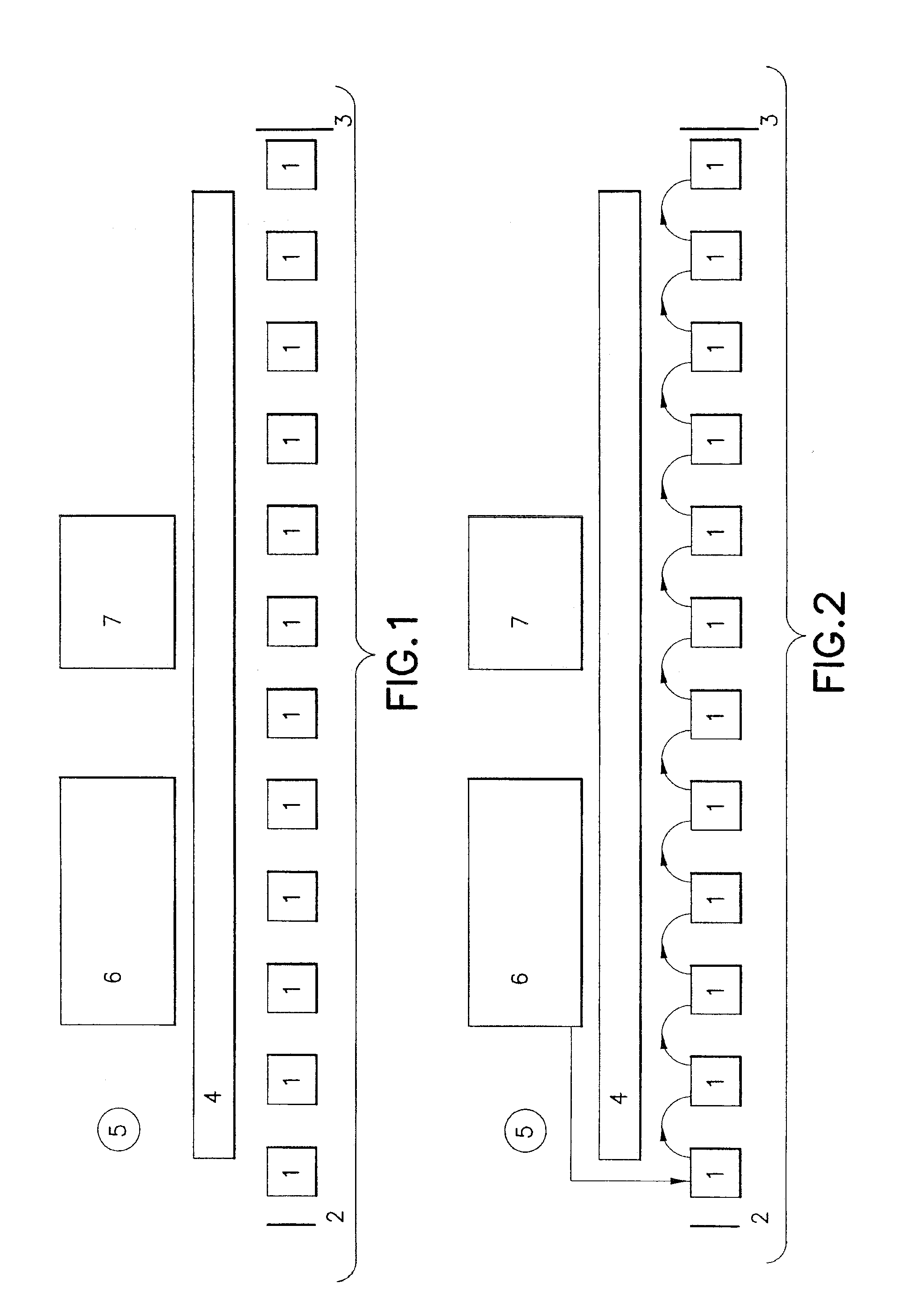Ink jet multi-color printing system
a multi-color printing and ink jet technology, applied in printing, typewriters, other printing apparatuses, etc., can solve the problems that production has not yet reached the full industrial dimension, achieve the effects of improving production speed, saving preparation time, and simplifying server serving of digital images
- Summary
- Abstract
- Description
- Claims
- Application Information
AI Technical Summary
Benefits of technology
Problems solved by technology
Method used
Image
Examples
Embodiment Construction
[0046]The term “printable substrate” as used hereinbefore and hereinafter means any substrate capable of being printed by an ink jet engine, and includes, by way of example, fibrous substrates including without limitation, textiles including a broad array of fabrics and the like, woven fabrics (e.g. Jacquard fabrics) and non-woven fabrics, and other fibrous substrates such as high fiber content papers.
[0047]This invention is a system for multi-color printing diverse substrates, particularly including textiles on an industrial scale. Textile printing involves wet printing water-based solutions of dyes onto a fabric, drying the fabric, steaming the fabric and then washing and framing the fabric, i.e., printing and finishing. In particular this invention converts or retrofits some or all screen print stations on a rotary printer to digital ink jet print engine stations. FIG. 12 shows the floor plan for an industrial plant converted for high-speed digital textile printing. The upstream ...
PUM
 Login to View More
Login to View More Abstract
Description
Claims
Application Information
 Login to View More
Login to View More - R&D
- Intellectual Property
- Life Sciences
- Materials
- Tech Scout
- Unparalleled Data Quality
- Higher Quality Content
- 60% Fewer Hallucinations
Browse by: Latest US Patents, China's latest patents, Technical Efficacy Thesaurus, Application Domain, Technology Topic, Popular Technical Reports.
© 2025 PatSnap. All rights reserved.Legal|Privacy policy|Modern Slavery Act Transparency Statement|Sitemap|About US| Contact US: help@patsnap.com



